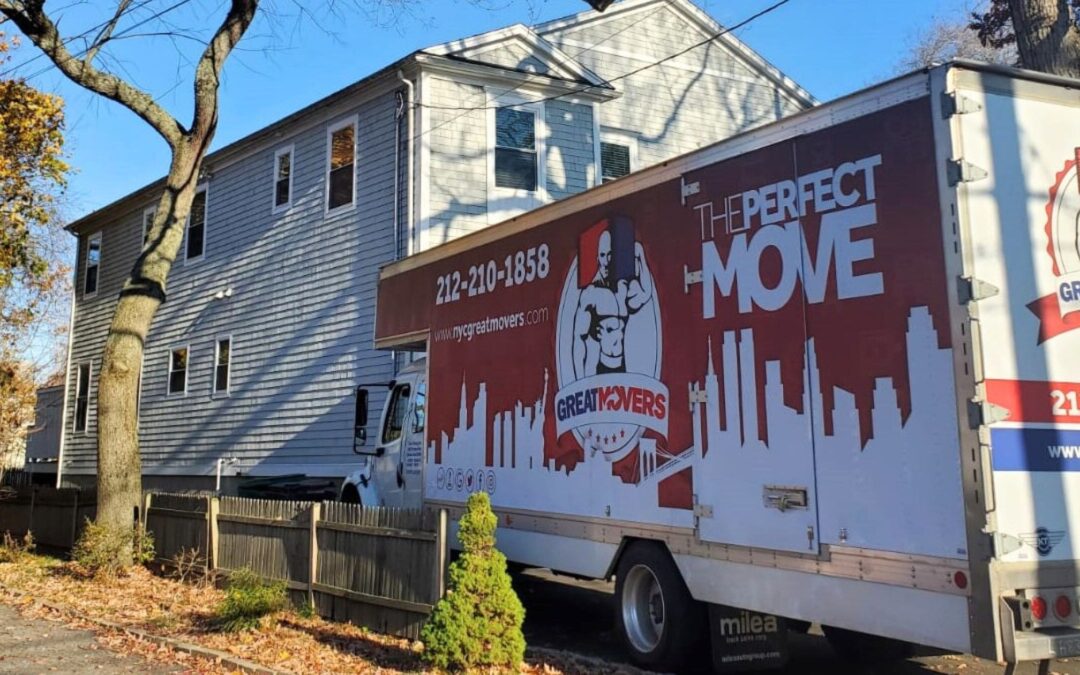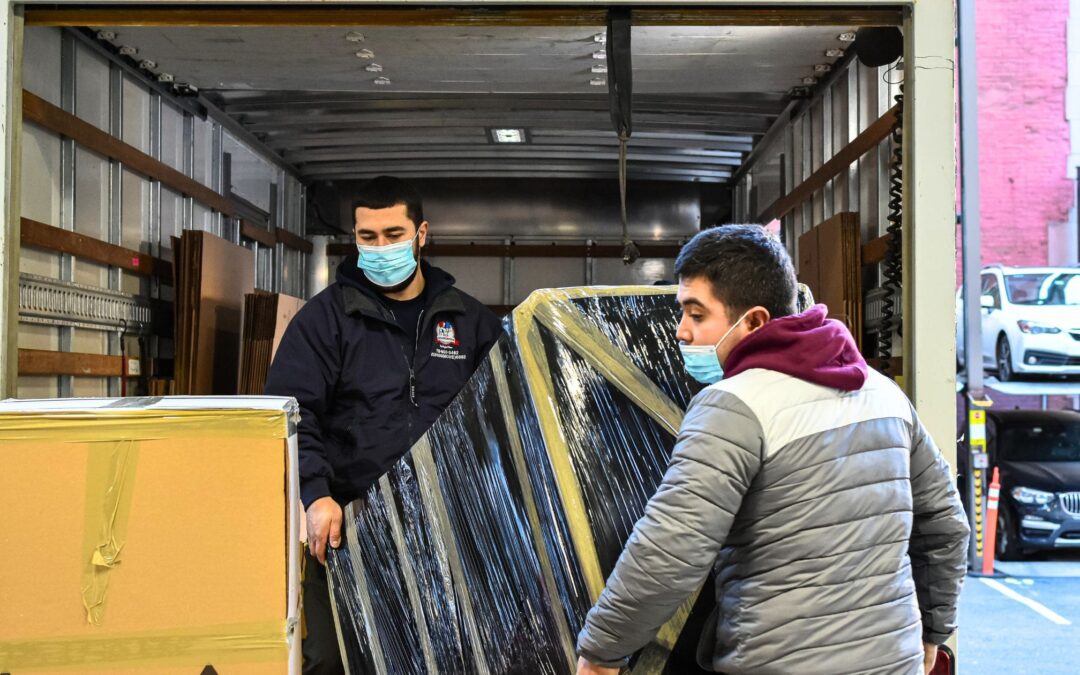Moving is a hassle, but when you add pets to the mix, it turns an already stressful situation even worse, not just for you, but for them as well. Pets are creatures of habit, and sudden changes to their environment can lead to anxiety. If you want to make your move with your pet as stress-free as possible, then follow these tips to hire the best professional movers.
Go Slow
It’s easy to put off packing until the last minute, but for your and your pet’s sake, start early. Pets will absolutely notice changes in the house. Big changes, loud noises, and sudden activity send alarm bells in their mind that something’s different. And, for the most part, they respond with fear and anxiety.
In order to reduce their stress, take it slow and stretch the process out over a few days at the very least. Although the earlier you start, the calmer you and your pet will be on moving day. If you have the room, start putting together your boxes a few weeks before your move. You can even start packing! Focus on a single room at a time and make sure to leave their belongings out until moving day. Your pet might be curious about the new items and check them out, but once they get used to them, within a few days. The idea is to condition them ahead of time to reduce potential disruptions as you get closer to your actual move date. Just make sure you know where your pets are before you close up the boxes, as you don’t want to accidentally pack them up!
NYC Pet Moving Guide: Go Slow for a Stress-Free Move
| Time Before Move | Key Actions | Purpose | Impact on Pet Stress (1–10) |
|---|---|---|---|
| 3–4 Weeks Before Move | Start gathering moving boxes and supplies in one room. | Helps pets get used to new objects and sounds gradually. | 3 |
| 2–3 Weeks Before Move | Begin packing one room at a time; avoid disturbing the pet’s favorite space. | Reduces sudden environmental changes that trigger anxiety. | 4 |
| 1–2 Weeks Before Move | Move your pet’s toys, bed, and food bowl into their “safe room.” | Creates a calming, familiar environment during chaos. | 2 |
| 1 Week Before Move | Prepare an overnight “pet essentials bag” (food, leash, litter, medication, etc.). | Ensures comfort and routine during and right after moving. | 2 |
| 1–2 Days Before Move | Keep pets in a quiet room or have them stay with a friend/family member. | Minimizes exposure to loud noises, movers, and commotion. | 1 |
| Moving Day | Check their location before sealing boxes; act calm and reassuring. | Prevents accidental stress or safety risks during loading. | 1 |
In order to ease any anxiety your pet might have, you can even move their belongings into their favorite room so they have a safe place to relax. If you can, let them stay with a family member or friend and pick them up after you’ve moved to your new home. Of course, that’s not always possible, so if you can’t find a place for them to stay for a few days, keep your pets in a quiet room away from all the hustle and bustle to keep them calm.
Packing in advance also has the added benefit of keeping your stress levels low as well. And the happier and normal you act, the less stressed your pet will be. Speaking of packing, don’t forget to pack a separate essentials bag for your pet so you can immediately have all of their familiar items ready to go when you move to your new place.
Avoid Changing Your Routine as Much as Possible
Pets like it when things are stable. That’s why any changes to their routine, like taking them to the vet or moving, ramp up their anxiety. It might be tempting to skip your standard routine when you’re packing or organizing your belongings, but any small disruption can lead to negative behavior in your pet, especially for those that are highly sensitive to changes. The more stressed your pet is, the more likely they will be to act out , whether that means scratching up your furniture, chewing on your shoe, or whatever other habit they have to deal with their anxiety.
If you want to keep your pet as relaxed as possible, make sure to do the following:
- Feed them at the same time
- Take them out for regular walks and playtime
- Give them extra love and attention
One good change you can make to your routine is to spend a little extra time playing with your pet. After all, a tired pet is a calm pet! For dog owners, ask a friend or family member to take your puppy out for extra walks in the park if you’re too busy.
Get Your Pet’s Medical Records
Whether you’re moving from out of town or just going to a different borough, chances are you’ll probably end up changing vets. If that’s the case, you’ll want to make sure you have your pet’s most recent medical records on hand.
Essential Pet Medical Records for Moving Day
| Action | Purpose |
|---|---|
| Collect your pet’s most recent medical records from your current vet. | Ensures you have up-to-date health information for your new vet or daycare. |
| Confirm vaccinations are current. | Many landlords and facilities require proof before move-in. |
| Ask your vet for tips to manage stress during moving. | Helps reduce anxiety and prevent behavioral issues. |
| Request any prescribed medication if your pet has anxiety or medical conditions. | Keeps your pet comfortable and safe during transition. |
| Keep records easily accessible on moving day. | Peace of mind and quick access if needed for emergencies or new care providers. |
Medical records aren’t just for your vet, though. Your landlord might ask for it before move-in to ensure your pet is up-to-date on all their shots. And you’ll need it if you end up switching to a new doggy daycare. It’s also good to have on hand, especially if your pet has a medical condition. Plus, there’s no reason not to get one, as your previous vet will provide it to you free of charge. It might take an extra step, but it can provide you with peace of mind come move day.
While you’re visiting your vet, you can ask them for any tips on how you can help your pet manage stressful situations. Some vets might prescribe medication, especially if your pet has a history of anxiety.
Figure out Transport
How do you plan on getting your pet from your old home to your new one? At the end of the day, it depends on how far you’re traveling and how many pets you have.
With that said, something you can do regardless of your transportation situation is to get your pet used to their carrier. They’ll be spending quite a lot of time in there, so it’s good to get them acclimated to it before the move. Leave it out with the door open and include some of their favorite toys inside. You can even start feeding them in the carrier so they get more comfortable. By moving time, they’ve associated the carrier with a positive experience.
- Subway – if you live in NYC, the subway might be the easiest option, but not necessarily the least stressful. The loud noises, strong smells, and number of people can easily agitate a pet. Still, if the ride isn’t too long, it’s not a bad option, so long as you can transport them easily in a pet carrier. If you have large pets or more than one, this option might not be feasible.
- Car – a car is an excellent option if you’re not too far away from NYC, but it will require some additional supplies like a seat belt for the carrier, toys, a no-spill water bowl, and a seat cover. If your pet isn’t used to traveling, cover the carrier with a towel or blanket so they can’t see the ever-changing environment. For dogs, you’ll need to factor in additional breaks on the road so they can stretch their legs and go to the bathroom.
- Plane – there are rules and regulations when it comes to flying with pets. Smaller animals can be flying with you in their carrier so long as they are placed under your seat and you pay an additional fee. Larger pets have to fly in the cargo area of a plane, and most airlines will not allow pets in the hold if the temperature is colder than 45°F or warmer than 85°F to prevent injury or even death. You’ll also want to make sure you bring proof of recent vaccination. If you have the money, you can also opt for Pet Airways, a pet-only airline that will get your dog or cat to their destination without being held in cargo.
- Hire a professional – you have probably hired professional movers to help you relocate, so why not hire professional pet movers? It might cost you more money, but it can help remove a lot of the confusion when it comes to moving pets. Even if you’re moving within New York City, you can take advantage of Pet Taxis to get your pet from point A to point B with ease.
Get Them Used to the New Place
Once you get all of your belongings moved into a new place, you might feel great, but your pet is probably even more stressed. After all, they’re in a completely new place with new sights, scents, and people. Before you start unpacking your belongings, take the time to set up an area for your pet, preferably in a quiet and secure location. You want to make sure you either keep your pet in their carrier or close the door to the room they’re in so they don’t dart out while you’re still moving in.
Helping Your Pet Adjust to a New Home
| Action | Purpose / Tip |
|---|---|
| Set up a quiet, secure area for your pet before unpacking. | Prevents pets from getting overwhelmed by noise and clutter. |
| Keep pets in their carrier or a closed room while unpacking. | Ensures safety and helps them feel secure. |
| Slowly introduce them to different rooms and spaces. | Allows pets to acclimate at their own pace. |
| Take dogs on neighborhood walks; let them sniff and explore. | Helps them get familiar with their new environment. |
| Set up a “home base” for cats in a quiet room. | Provides a safe retreat away from moving chaos. |
| Maintain old routines as much as possible (feeding, playtime). | Reduces stress by providing familiarity in a new environment. |
| Pet-proof your new home (secure windows, cords, vents, and remove hazards). | Keeps pets safe while exploring. |
Once you’re settled, slowly introduce your pet to the new place. For dogs, introduce them to the area with walks and let them sniff around so they can get used to the neighborhood. You might also want to keep a crate out for more anxious dogs, as this can provide them with a place to retreat if they become too overwhelmed. You should stick as close to your old routine as possible. Not only will it help you bounce back to a normal routine, but it will also help your pets. With that said, the first week, try to stay home as much as possible, as your pets will need your reassurance and comfort.
With cats, you’ll want to set up a home base for them away from the noise and messy unpacking environment if possible. If you only have a studio, set your cat up in the bathroom, at least temporarily. It will keep them away from the hectic energy of moving while also giving them some time to get used to their new environment. Some pets might take longer to acclimate to the new place, so be patient.
You’ll also want to take some time to pet-proof your home. That means:
- Securing all screens, windows, gates, and doors
- Making sure all vents have covers
- Checking for any poisons or pest control traps
- Removing any plants left behind by previous owners
- Making sure your electrical cords and sockets are out of reach
Update Your Pet’s Microchip and Tags
You update your own personal information, so don’t forget about your pet! While no one wants to imagine that their pet will bolt during a move, it’s one of the most common times for pets to go missing since:
- You’re attention is split between the movers, packing, and your pet
- All of the doors are wide open
- Your pet is likely stressed
These three factors are a recipe for disaster. Of course, you can avoid this by properly isolating your pet in a carrier or crate, but it’s better to be safe than sorry! Make sure to update this information before the move, so if they do happen to go missing, they’ll be sent to the correct address.
Your pets are a huge responsibility and should be treated with kindness and care, especially during a stressful event like moving. Consider their needs as well while moving. They’ll thank you for it!
FAQ
Will professional movers take my pet in their van?
No. You will need to provide transportation for your pet as the movers are not licensed to handle animals.
How long will it take for my pet to adjust to the new home?
It depends on the pet. Some might settle in quickly, while others might take a few months. If you know your pet tends to be the anxious type, make sure you give them plenty of time and love so that they will feel comfortable.
Do I need to pay a pet deposit?
Some apartments in NYC do require you to pay a pet deposit. Make sure to ask your landlord/building management for any associated fees.









